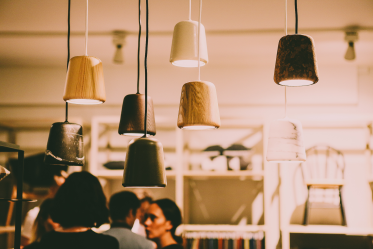
Carbon Neutral's impressive reforestation project.
Since HouseLab was launched one of our core values was to be sustainable through reducing the unnecessary printing of paper and other associated materials commonly included in handover kits for new homes. One client recently completed a project with HouseLab's digital handover kits that saved over 70,000 sheets of paper. But intuitively that just didn’t feel enough and, while we discussed different options, we felt most importantly that we should just start with something tangible, measurable and connected to what we do.
We started exploring ways of positively contributing to the natural environment as we are directly benefiting from the built environment. Planting trees as part of a sustainable business policy is certainly not new, but it seems to have taken on more urgency to us based on the unfolding catastrophe of the unprecedented fires engulfing Australia.
There are many organisations out there, but we decided to partner with Carbon Neutral for a number of reasons, some of them being;
- They have planted 29+ million trees so far and have ambitions of making a real difference to Australia's flora, fauna and local communities.
- They are focussed on a multi-species reforestation project in a bio diversity hot spot.
- They are recognised as a market leader in carbon management and advice. They have built a reputation over the past 18 years as a trusted and experienced environmental partner.
- They have a powerful vision (see below).
- They have a sensible fire management plan (see below).
- Anyone can visit the project, which was important as we wanted it to be a tangible and transparent partnership.
- They seem like decent humans.
So HouseLab will plant a tree for every handover, our ambition is to plant 50,000 trees per year, within three years.
At the initiation of this partnership we will have already invested in our first tranche of tree planting and would expect to have paid for our first 1000 plantings by Q1 CY20.
We’re committed to providing a measurable approach to regenerating our environment and supporting local communities.
Reference material;
Great video outlining their mission - https://www.youtube.com/watch?v=qO_kISP7h9Y&t=5s
Carbon Neutral vision;
Our vision is to re-create a healthy, functioning landscape, restored after decades of habitat loss and degradation. This will become the new bush that helps connect the Outback.
This is a legacy landscape – one in which our actions now will ensure this landscape will be left in a much better condition than we received it. This will be our gift to future generations and to the planet.
This reforestation will encourage native animals and plants that have vanished or been pushed to the brink of extinction in the region return and breed. Imagine how special it will be to welcome back iconic threatened species such as Malleefowl, Bush Stone-curlew, Carnaby’s Cockatoo, Western Spiny-tailed Skink and the Woylie (Brush-tailed Bettong), as well as over 30 species of conservation-significant native plants!
Recent announcements;
2020
“This year we are in the final planning stages of planting 359 hectares for year 2020 planting – planning now to get the orders into the nursery in the next 4 weeks. We are already researching and enquiring as to what land we will plant on in year 2021 and how many hectares. Our Vision is to have planted enough trees that they will be visible from space. To do this we will need to plant 100,000 hectares!”
Georgiana Rogers
General Manager
Carbon Neutral
georgiana@carbonneutral.com.au
2019
https://carbonneutral.com.au/our-plantings-this-year/
2018
https://carbonneutral.com.au/we-have-been-busy-in-the-forest-this-past-year/
About the location;
Yarra Yarra Biodiversity Corridor
Based in Western Australia, this project has been operating for 18 years and has shown excellent results and importantly durability. You can see the exact location below.
About 90% of the northern Wheatbelt was cleared for agriculture from the early 1900s. This removed so much native habitat that many plant and animal species went extinct locally or regionally. Others, however, hung on in woodland and shrubland remnants usually on rocky ridges and commercially less productive upper valley slopes.
An example of more mature trees are found on this property -28.938751, 116.039190 (taken off Google Maps).
“I attach a map of our plantings. It has been done in GIS so totally accurate to the Lot # size on this map. Approx 13,000 hectares planted so far. This is all our reforestation – all mixed native species plantings. “
Georgiana Rogers

Fire risks;
The following mitigation measures are implemented to reduce/address fire risk:
- As part of each property and plantation establishment, a range of measures are put in place to reduce the risk of fire and implement fire-fighting actions via a Fire Management Plan.
- Plantations are alley not block plantings, meaning the 7 to 10 metre inter-row spacing provides a natural fire break and fire fighting vehicle access.
- Strategic sheep grazing is carried out in the plantings to reduce the grass development and fire (fuel) hazard. The grazing is generally initiated at three years post-planting.
- The use of native plant species in the plantings provides a proven natural resilience to fire via rapid recovery / regeneration by re-sprouting from stems/branches, below-ground lignotubers, as well as regeneration from natural seed dispersal.
- Plantations are spread across four major aggregations separated by 10-25 kilometres of farmland. Within aggregations individual properties are further separated by public roads and paddock fire breaks.
- Plantings are currently covered by insurance for re-planting.
WRITTEN BY HouseLab






